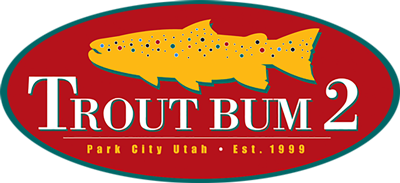Late March into mid-April marks the opening of Trout season across the US. It is an exciting time of year for catch-and-release enthusiasts. It means it is time to trade fly fishing tips, dust off the old rods, take stock of tackle, and pick up new dry flies, nymphs, and hooks.
Some of the most important fly fishing techniques include reading a stream and knowing what fly to use. Both are crucial to success. These skills make all the difference when you are trying to catch a fish worth bragging about. Read on for fly fishing tips about lies and flies.
Understand the Species
Each species has different preferences and patterns. With dozens of species and sub-species, there are many persnickety preferences to grasp, so let’s just look at a few examples:
- Streams with a moderate flow and lots of shade are preferential for Brook and Speckled Trout. These species like to hang out in pockets of calmer water, but tend to shy away from slow moving pools.
- Brown Trout like slower, calmer conditions and do not mind warmer water. They can be found in deep pools and slow, calm sections of a stream.
- Rainbow Trout like swift, fresh water with rocky riverbeds.
Lies
Some of the most helpful fly fishing advice and wisdom in the fishing world is around identifying lies. A lie is where a fish “lies” or lingers. There are feeding lies, sheltering lies, and prime lies. Prime lies are where fish feed as well as seek shelter from natural predators. The biggest and healthiest fish are in the prime lies.
Again, each species has unique preferences and tendencies, but all hide from the same predator, birds. Avoid areas where birds can see fish. This includes areas where the riverbed is illuminated by sunlight or the riverbed is light and smooth. Trout try to avoid these areas because birds can see them.
- Brown Trout linger in shadows behind submerged logs where there is a little current, but nothing excessive. Overall, look for clear water and plenty of places to hide from predators in the sky.
- Rainbow Trout prefer to be near the current, so look for shadows behind large rocks in the current and riverbeds comprised of small to medium rocks.
Generally, look for water that is a little slower but still moving. Take note of banks, riffles, submerged logs, large rocks, and overhanging foliage – anything that can offer camouflage from avian predators.
Dry Flies vs. Nymphs
All flies have one purpose: mimic food and lure the fish to take a bite.
Dry fly fishing techniques are what most people think of when they picture fly fishing. It is a technique limited to the surface. Some anglers will only dry-fly fish because it is more challenging and therefore more rewarding to make a catch.
Nymph flies sink below the surface of the water. They work by mimicking Trout’s favorite underwater snack; larval stage aquatic insects.
Most anglers use a combination of dry and nymph flies. Dry flies tend to be most effective when insects are hatching, but only if the fly closely resembles the hatching insects. Both flies work beautifully with barbless hooks, so both are ideal for catch-and-release fishing.
Flies are a deep topic, with every angler having “the best” fly fishing advice. There are so many fly fishing tips and ideas because fly fishing techniques are constantly evolving.
One thing that catch and release enthusiasts agree upon is that hand tied flies (both dry and nymph) are ideal. It takes a little practice, but it is unbelievably satisfying to land a powerful, beautiful fish that took your hand-crafted fly.
Get Local
Make a trip to your local fly shop to learn more about the species specific to your area. Enjoy the art of learning how to read streams and experimentation with different flies. Catch-and-release fly fishing is part experience, part common sense, and part trial and error. Above all, enjoy the tranquil surroundings and the splendor of Mother Nature, regardless of whether or not you make a catch.
